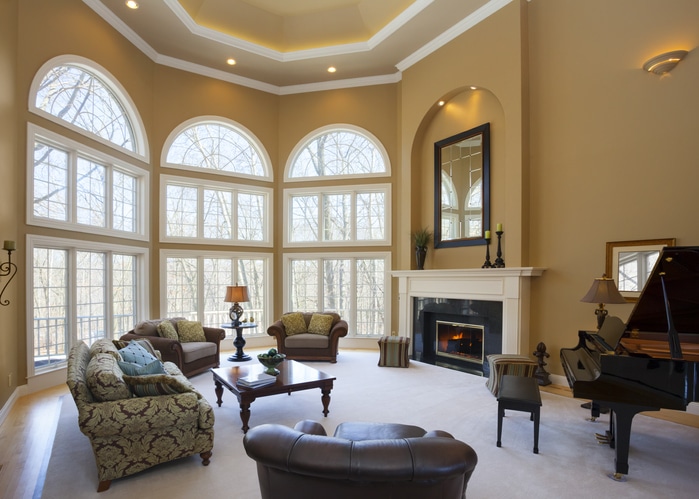
High ceilings “open up” a room and create a spacious ambience. They also add design opportunities, such as skylights that bring more outdoor light into the space. A “vaulted ceiling” (as they are known) also adds additional cubic feet to the room — space which must be cooled in the summer and warmed in the winter. Here are some ways that extra overhead space created by high ceilings can be accommodated when it comes to heating/cooling operation and efficiency.
Air Conditioning
Because heat rises, the increased overhead space may become a reservoir of heat that makes a room with a vaulted ceiling difficult to keep cool in the summer. Options to deal with that extra heat load include:
- Start with proper sizing. When calculating the required BTU capacity for the house, it’s important that the sizing calculation takes into consideration the larger volume of air contained in rooms with vaulted ceilings. Otherwise, the cooling capacity of the central AC may be insufficient.
- Consider ceiling fans. Highly efficient ceiling fans installed in a room with a vaulted ceiling disrupt the layer of hot air accumulating near the ceiling and help reduce overheating. The fans produce a continuous flow of gentle air circulation that makes the room feel cooler to occupants without pushing the thermostat setting lower.
Heating
During winter, heat from the furnace rising in a room with a vaulted ceiling accumulates at the ceiling, depriving occupants in the lower area of warmth.
- One option is to install supply vents closer to floor level as opposed to higher up on the wall. This helps keep lower areas warmer.
- A zoned system converts a single room into an independent temperature zone, controlled by a dedicated thermostat. Electrically operated supply vents provide the specified room with additional warm or cool airflow to accommodate special considerations like a high ceiling.
- Ceiling fans also help during the winter. Because fan rotation is reversible, a ceiling fan set to the “winter” (clockwise) mode pushes warm air accumulating at the high ceilings back down into the lower living space.
For more ways to make high ceilings compatible with comfort and efficiency, contact Jackson & Sons.

